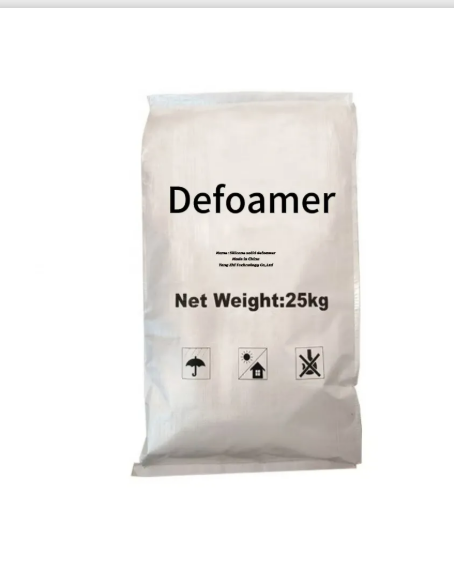
Antifoaming Chemicals: Enhancing Industrial Efficiency
In industrial processes, foam formation can lead to inefficiencies, equipment issues, and reduced product quality. Antifoaming chemicals are specialized additives designed to prevent and eliminate foam, ensuring smoother operations and higher productivity. These chemicals play a critical role in sectors such as food and beverage, pharmaceuticals, pulp and paper, paints and coatings, and wastewater treatment.
The mechanism of antifoaming chemicals involves destabilizing the foam structure, allowing bubbles to merge and collapse. This reduces the volume of foam, prevents overflow, and minimizes contamination risks. By incorporating antifoaming chemicals into production systems, manufacturers can optimize process efficiency, maintain product consistency, and reduce maintenance costs.
Modern antifoaming chemicals can be organic, silicone-based, or derived from natural compounds. Each type is formulated to meet specific process requirements, temperature ranges, and environmental standards. Their versatility ensures they are suitable for delicate applications, such as food and pharmaceuticals, as well as high-shear industrial processes.
Chemical Antifoam Agent: Types and Mechanisms
A chemical antifoam agent is a substance added to liquids to reduce or prevent foam formation. These agents operate by disrupting the stability of bubbles, causing them to coalesce and burst. Chemical antifoam agent formulations vary based on application needs, including temperature, viscosity, and compatibility with other additives.
Key types of chemical antifoam agent include:
-
Silicone-Based Antifoams: Comprising compounds such as polydimethylsiloxane (PDMS), these agents are highly effective and versatile. They spread over foam surfaces, destabilizing bubbles and enabling collapse. Silicone antifoams are ideal for high-temperature, high-shear, and long-duration processes.
-
Hydrocarbon-Based Antifoams: Made from mineral oils, fatty acids, or their derivatives, hydrocarbon antifoams are widely used in industries requiring compliance with regulatory standards, such as food production and environmental processing.
-
Ester-Based Antifoams: Derived from natural or synthetic esters, these agents are commonly used in fermentation and food and beverage production. They are non-toxic and help maintain product quality during processing.
-
Alcohol-Based Antifoams: Effective in aqueous systems, these agents reduce surface tension and accelerate bubble coalescence. They are frequently used in detergents, cleaning solutions, and water treatment processes.
By understanding the types and mechanisms of chemical antifoam agent, manufacturers can select the most suitable product for their specific needs, optimizing foam control and production efficiency.
Examples of Anti Foaming Agent In Industry
Examples of anti foaming agent can be found across diverse sectors. Their effectiveness ensures consistent quality, operational efficiency, and product safety.
-
Food and Beverage Industry: Anti-foaming agents prevent foam during beverage production, including beer, soft drinks, and dairy products. Common examples of anti foaming agent include PDMS, vegetable oil-based formulations, and ester derivatives suitable for human consumption.
-
Pharmaceutical Manufacturing: Foam can interfere with mixing, formulation, and reaction processes. Anti-foaming agents like silicone oils and polyglycol-based compounds ensure precise dosing, homogeneous mixing, and product stability.
-
Pulp and Paper Industry: Foam forms during pulping, bleaching, and paper coating. Examples of anti foaming agent include hydrocarbon-based defoamers and silicone emulsions, which improve processing efficiency and paper quality.
-
Paints and Coatings: Foam can negatively affect surface finish, gloss, and color uniformity. Anti-foaming agents, including silicone-based and polymeric defoamers, enhance flow and leveling.
-
Wastewater Treatment: Foam in aeration tanks reduces treatment efficiency. Non-toxic, biodegradable anti-foaming agents maintain compliance while improving operational stability.
The selection of examples of anti foaming agent depends on process characteristics, regulatory requirements, and environmental considerations.
Advantages of Examples of Antifoaming Agents
Using examples of antifoaming agents provides numerous benefits in industrial processes:
-
Operational Efficiency: Foam reduction prevents production delays, reduces equipment cleaning frequency, and minimizes maintenance interruptions.
-
Improved Product Quality: Anti-foaming agents help maintain consistency, clarity, and texture, especially in food, beverages, and pharmaceuticals.
-
Cost Savings: Reducing foam lowers waste, maintenance costs, and downtime, contributing to overall cost efficiency.
-
Versatility: Examples of antifoaming agents are available in silicone-based, organic, hydrocarbon, ester, and alcohol formulations, catering to diverse industrial requirements.
-
Environmental Compliance: Many modern anti-foaming agents are biodegradable, non-toxic, and suitable for eco-conscious manufacturing processes.
By incorporating examples of antifoaming agents, industries can ensure smooth operations, higher output, and improved product quality, meeting both technical and regulatory standards.
Selecting The Right Antifoaming Chemicals For Your Application
Choosing the appropriate antifoaming chemicals requires careful consideration of liquid type, process conditions, temperature, viscosity, and regulatory compliance. Silicone-based defoamers excel in high-temperature, high-shear applications, while organic and natural anti-foaming agents are preferred for food, beverage, and environmentally sensitive processes.
Factors to consider include:
-
Process temperature and pressure
-
Type of foam and foam tendency
-
Compatibility with other additives
-
Regulatory and environmental requirements
Integrating antifoaming chemicals correctly ensures stable operations, reduces equipment wear, and enhances product quality. Testing multiple formulations and adjusting dosages are essential for achieving optimal foam control.
FAQs About Antifoaming Chemicals
What Are Antifoaming Chemicals?
Antifoaming chemicals are additives designed to reduce or prevent foam formation in industrial processes, improving efficiency and product quality.
How Does A Chemical Antifoam Agent Work?
It destabilizes foam bubbles, allowing them to coalesce and collapse, minimizing foam volume in production systems.
What Are Some Examples of Anti Foaming Agent?
Examples include silicone-based defoamers (PDMS), hydrocarbon oils, ester derivatives, and alcohol-based agents suitable for various industries.
What Benefits Do Examples of Antifoaming Agents Provide?
They improve operational efficiency, product quality, reduce maintenance costs, and ensure environmental compliance.
How To Choose The Right Antifoaming Chemicals?
Consider process type, foam tendency, liquid properties, temperature, and regulatory requirements. Organic or natural agents are preferred for eco-sensitive applications, while silicone-based agents excel in high-shear conditions.
-
Hydroxypropyl Starch as a Sustainable Construction AdditiveNewsNov.24,2025
-
The Gelation Properties of CMCNewsNov.21,2025
-
Redispersible Latex Powder and Water Retention CapacityNewsNov.21,2025
-
Dosage Control for Polycarboxylate Water ReducerNewsNov.21,2025
-
Film-Forming Properties of Polyvinyl AlcoholNewsNov.21,2025
-
The Function of Gypsum Additives in MortarNewsNov.21,2025





















